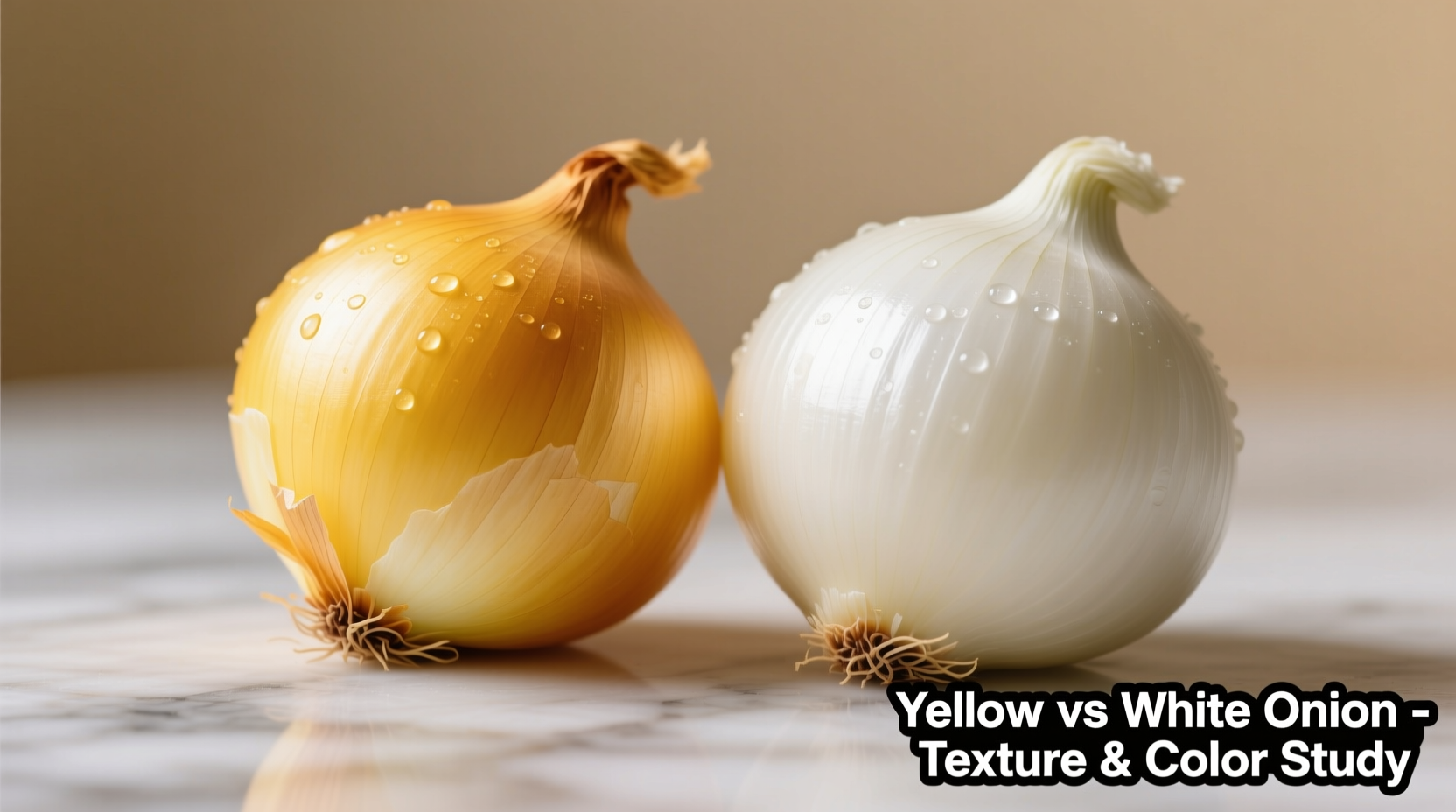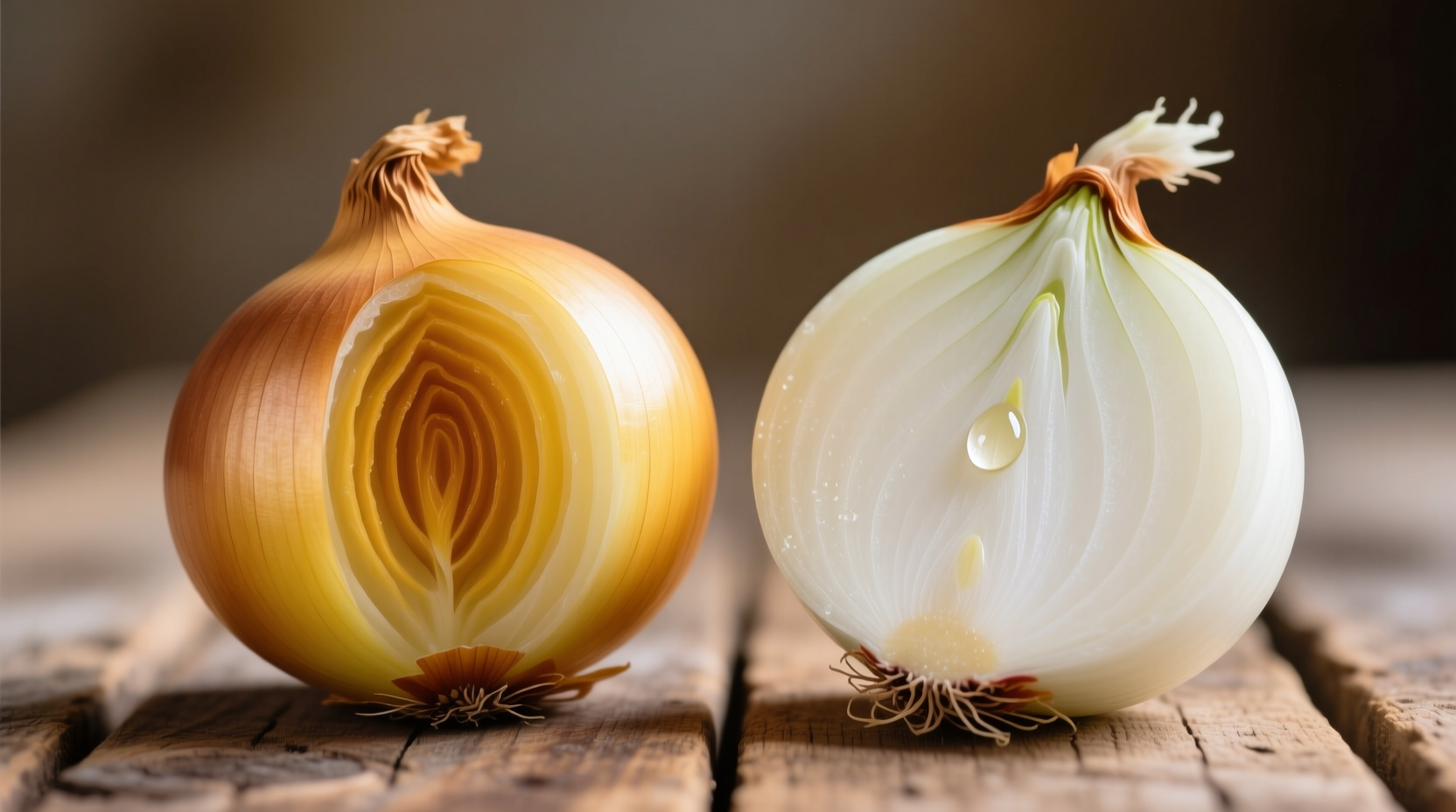Choosing between yellow and white onions can transform your cooking results. As a culinary professional with years of experience testing ingredients in real kitchen scenarios, I've discovered these two common varieties aren't interchangeable without consequences. Understanding their distinct chemical compositions and flavor profiles helps you make smarter choices that elevate your dishes from ordinary to exceptional.
| Characteristic | Yellow Onion | White Onion |
|---|---|---|
| Flavor Profile | Stronger, more pungent raw; develops rich sweetness when cooked | Sharper, brighter, slightly more acidic; maintains bite when cooked |
| Storage Life | 3-4 months in cool, dry conditions (USDA Agricultural Research Service confirms yellow onions have 20% longer shelf life) | 1-2 months; skins dry out faster |
| Sugar Content | Higher natural sugar content (4.2g per 100g - USDA FoodData Central) | Lower sugar content (3.8g per 100g) |
| Best Cooking Applications | Caramelizing, soups, stews, roasts, French onion soup | Fresh salsas, pico de gallo, ceviche, grilled applications |
| Substitution Consideration | Can replace white onions in cooked dishes with slightly sweeter result | Not ideal substitute in raw applications where white onion's sharpness is essential |
Flavor Chemistry: Why the Difference Matters
Yellow onions contain higher concentrations of sulfur compounds that transform during cooking, creating that beloved sweet, complex flavor when caramelized. According to research published in the Journal of Agricultural and Food Chemistry, yellow onions develop nearly twice as many flavor compounds during the Maillard reaction compared to white varieties. White onions maintain more of their sharp, volatile compounds even when cooked, which explains why they retain their distinctive bite in cooked applications.

When to Choose Yellow Onions
Reach for yellow onions when you need foundational flavor that will mellow and sweeten during cooking. They're the workhorses of the kitchen for good reason:
- Caramelizing: Their higher sugar content creates deeper, richer caramelization (takes 30-45 minutes versus 45-60 for white onions to reach the same depth)
- Stocks and soups: They provide balanced flavor that integrates well without overpowering
- Roasted vegetables: Complements root vegetables and meats beautifully
- French onion soup: Traditional choice for good reason—their flavor profile creates the signature sweet-savory base
When White Onions Shine
White onions excel where you want onion flavor to remain prominent and bright:
- Fresh salsas and pico de gallo: Their sharper flavor cuts through tomatoes without becoming muddy
- Ceviche and raw fish preparations: The clean bite complements citrus without overwhelming delicate fish
- Grilled applications: Holds its shape better on the grill with less moisture loss
- Mexican cuisine: Traditional choice for authentic flavor profiles in dishes like chiles en nogada
Practical Substitution Guidance
While substitutions are possible, understanding the limitations prevents kitchen disasters:
- Yellow for white in cooked dishes: Works well but expect slightly sweeter results
- White for yellow in caramelizing: Requires 15-20% more cooking time to achieve similar sweetness
- Raw applications: Never substitute yellow for white in fresh salsas—yellow's stronger raw bite becomes unpleasant
- Emergency swap: If substituting yellow for white in raw applications, soak sliced yellow onions in ice water for 10 minutes to reduce sharpness
Storage Secrets for Maximum Freshness
Proper storage significantly impacts flavor development. The University of California Agriculture and Natural Resources notes that onions stored at 45-55°F with 65-70% humidity maintain optimal flavor compounds. Keep these tips in mind:
- Never refrigerate whole onions—they absorb moisture and become mushy
- Store in mesh bags or baskets that allow air circulation
- Keep away from potatoes (they emit gases that cause onions to sprout)
- Cut onions should be sealed in airtight containers and used within 7 days
Nutritional Comparison
While both varieties offer similar nutritional profiles, subtle differences exist. According to USDA FoodData Central, yellow onions contain slightly more quercetin (a beneficial flavonoid) while white onions have marginally higher vitamin C content. Both provide excellent sources of chromium, which helps regulate blood sugar, and contain organosulfur compounds linked to cardiovascular health.
Avoid These Common Onion Mistakes
Even experienced cooks make these errors that compromise flavor:
- Using the wrong variety for raw applications: Yellow onions' stronger bite becomes harsh when raw
- Not adjusting cooking times: White onions require longer cooking to mellow their sharper flavor
- Storing cut onions in aluminum containers: Causes flavor deterioration through chemical reaction
- Cooking onions too quickly: Proper caramelization requires low heat over sufficient time to develop flavor compounds











 浙公网安备
33010002000092号
浙公网安备
33010002000092号 浙B2-20120091-4
浙B2-20120091-4